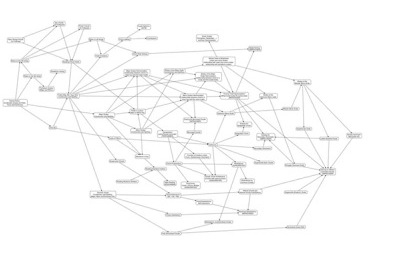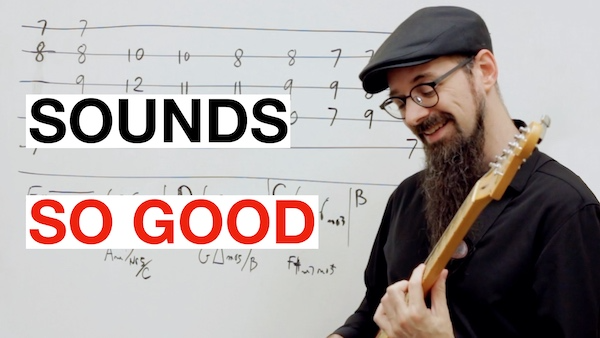The Secret To This Amazing BAROQUE Chord Progression On Guitar


Do you suffer from boring chord progressions? (Either writing, listening, or playing boring chord progressions...)
Do all of your songs sound like they’re using the same old chord progressions that have been used for the last 50 years? (... and you keep hearing at the radio. Really - can't they find something different to play for once?)
Do you want some excitement in your music?
Well, all you have to do is instead of using the same chord progressions that have been commonplace for the last 50 years... use chord progressions that were commonplace 300 years ago!
Most people are so unfamiliar with these progressions that they actually sound brand new to your average listener! It’s free real estate!
And the best part is you can steal progressions as much as you want because all of the people who wrote them have been dead for centuries, making it very difficult for them to file copyright lawsuits
(unless a very dedicated occultist-lawyer performs a sue-ance). (Ba-bump. Pshhh!) (1)
If you follow a couple of extremely easy "rules", you can have people thinking you are an innovative genius.
And if you don’t believe me, I posted a short video a while back of myself playing a baroque chord progression, which was met with many many comments like "How did you come up with that??", "This is chord witchcraft" and "Finally something fresh!"
But what these people didn’t realize was that the chord progression wasn’t even mine! Most people can’t even remember what was popular 15 years ago, let alone three centuries.
So, watch the video below and I’ll show you how you can make chord progressions like the one I played in that short (I’ll also show you that progression in the video linked below).
(1) I have two daughters, so of course I also have a license for telling dad jokes - at least until they are permitted under the Geneva convention.
Want to learn much much more about chords and harmony on the guitar? Check out my Complete Chord Mastery guitar course to massively expand your knowledge of chords on the guitar!
Video Transcription
Hello Internet, so nice to see you. Somebody asked me about the chords I was using in one of my shorts. The short videos of course. The piece I was playing, it was very short. It's a short piece for a short video and it was going pretty much like that.
Okay, so... Pretty linear, pretty simple, I tab it down in the background. So let's take it step by step. This is very interesting because you can totally copy this because I didn't compose this, okay?
That's an exercise I found in a book of Baroque music theory, an original book of Baroque music theory, meaning written in the Baroque era. And what they were... they're giving you, they're giving you only the bass line and a few numbers on top to tell you what kind of chords to play on top.
That's my realization on the guitar, but once you know what it is you can change a few things. So it starts with an E minor, the whole piece is in E minor, okay? And I'm playing the root E and I'm playing the third and the fifth.
And then it keeps going on in E minor because this second chord here, it's still E minor, okay? So one thing there's intelligent people in the Baroque era for doing is when you want a chord to go on twice, so you want to hold a chord longer, rather than playing the same thing exactly, just move the bass and octave higher or lower and immediately it sounds like you changed something.
Okay, I mean it's the same chord, but it's enough movement that keeps the thing going. So let's see. E minor here and here okay now we're gonna have a mystery chord here let me identify the simple chord if you play through these the way I'm showing it to you you recognize that that's an E minor that's a D that's a C that's a B and that's another E minor.
But the chords here here and here are kind of a chords well let's see this this chord here as a bass of C it's a C note and there is a G and then A again in some ways C G and A okay this chord doesn't really exist in modern theory of course you can always say okay it's a C sixth okay then we're calling it a 5-6 chord because it contains the fifth and the sixth okay.
And then optionally, you can put in the 3rd 2, so you can have C, G, A and E, but sometimes I'm just playing it without the 3rd. Depending on the realization you want to do, here I have a realization in 3 voices because I want to arpeggiate with this rhythm here, I want this rhythm so I need 3 notes per chord, but you can totally do another realization on the guitar that has 4 notes per chord in total and so you can put in the 3rd 2.
And the same happens for all those mystery chords. You see all those chords, a 5th and a 6th, a 5th and a 6th in the key. So, this chord here is C, G, A, so they were calling it C, 6-5 or 5-6 depending, so 6-5 will be, well you call this 6-5, 6-5, up to you, they were writing 6 and 5, ok?
This here as a bass of B and it would be called B6-5, now you notice that the intervals are different. This is a perfect 5th and a major 6th, this is a perfect 5th and a minor 6th. It's understood in all Baroque exercises that you adapt the 6th and the 5th to the scale, so you should know if it's major, minor, diminished, augmented, etc.
Ok, but yeah, modernly we would call this a B minor with a b6th, ok? Like we would call this a C major with a 6th, possibly no 3rd, ok? No 3rd here too. And this, it's an A, again, it's technically it's an A minor because we're in the key of B minor, but the 3rd is not there.
There, with a sixth and no third. Okay, so, sure, you can use these nomenclature, no problem. I mean, you call them however you want. The important point is that it does the root, the fifth, and the sixth.
And whatever fifth or sixth fits the scale, okay? What's the trick here, okay? Because the point of this exercise is not just to give you a nice piece to play or to just start from the bass line and get the chord.
The point of these exercises was trying to show you how some sounds were working. And the way these sounds were working these days is before a chord, like before D, before C, before B, put another chord that has the root one step below and there's a five and a sixth.
So, it's kind of trying to educate these exercises, trying to educate you. to go from this C5-6 or whatever you want to call it to D, so to hear this kind of resolution and then this kind of resolution and then this kind of resolution, and by the way you could go on, okay, and you could go on and on and on.
So this is always a chord with a 5 and a 6, one step below into the next chord. Before I'm going to D, I'm playing this C5-6 going to D. Before I'm going into the C, I'm going to play the B with a 5-6 into the C.
Before the B, I'm playing the A with a 5-6 into the B. It's kind of trying to teach you this kind of resolution and it's one step of many steps that they do in those exercises to educate your ear to hear this stuff and to use it in music.
Today you could take this chord because we have the same concept in modern music and you may not have recognized it yet but you're going to recognize it in a moment as the moment I respell this chord.
This is a C6 with no third. Okay, but I can write this very same chord as an A minor 7. A minor 7 contains A, C, E, G. Okay, I'm not playing the E, so I have an A minor 7 with no fifth and with a bass of C.
You see a modern notation. Makes this stuff too long but that's in modern notation. This would be called an A minor chord. Okay, this B here contains the B and F sharp and the G. I can turn it around.
And call these a G well it was a B minor flat 6th but it can also be called a G major 7th no 5th with a bass of B okay and these but why am I deleting them minor 7th no 5th okay rather than flat 5 that is no 5th okay what's happening here that's a circle of fifths E to A to D to G to C to F sharp to B to E we did a full run around of the circle of fifths for the key of B minor if you know anything about music you know the circle of fifths okay if I just play that the score if you just play those triads a minor A.
B, G, C, F, D, B, Fm7, Bb5, B and Em, you have this sound in your ear, you've heard this. That's just a way with some clever inversions to create this chord progression. Okay, now the piece doesn't really end here, the exit doesn't end here, it's adjusted to opening bars, it's much longer than that.
Now this little part forms a little unit, it's contained and it teaches you a lesson and it shows you how you can make the circle of fifth more interesting. So that's what I was playing in that shirt.
You guys can play it yourself. If you want way more on these and way more about how to find the course in your guitar and arrangement in interesting ways, I have a course, it's called Complete Chord Mastery, you find it on my website.
I recommend you check it out, it really helps you learning and understanding more of this instrument. This is Tommaso Zillio for musictheoryforguitar.com, and until next time, enjoy!